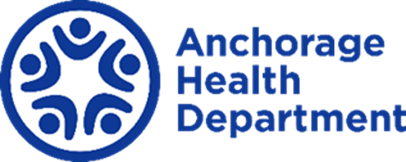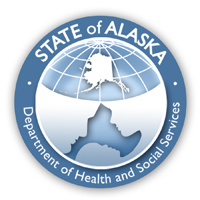DHSS Press Release: Testing and lab sequencing detects first case of variant SARS-CoV-2 strain in Alaska
Alaska Department of Health sent this bulletin at 01/26/2021 02:04 PM AKSTFOR IMMEDIATE RELEASE
Media contact: Clinton Bennett, DHSS, 907-269-4996, clinton.bennett@alaska.gov
Testing and lab sequencing detects first case of variant SARS-CoV-2 strain in Alaska
January 26, 2021 ANCHORAGE – The Alaska Department of Health and Social Services (DHSS) announced today that an Anchorage resident who tested positive for SARS-CoV-2 infection last month was infected with a variant strain of the virus known as B.1.1.7, which was originally detected in September in the United Kingdom. This is the first identification in Alaska of the B.1.1.7 strain, or any of the variant strains that are raising concerns among public health officials.
“Viruses constantly change through mutation so it’s not unexpected to find variants of the virus,” said State Epidemiologist Dr. Joe McLaughlin. “However, B.1.1.7 is one of several SARS-CoV-2 variants that has been carefully tracked because it appears to spread more easily and quickly than other strains of the virus.”
As of Jan. 25, the Centers for Disease Control and Prevention (CDC) counted 293 cases of B.1.1.7 in 24 states, according to a CDC webpage that keeps track of COVID-19 variant cases in the United States.
“We’re not surprised this variant has been detected in Alaska,” said Alaska’s Chief Medical Officer Dr. Anne Zink. “We’ve been sequencing the viral genome from a subset of positive test samples to detect the presence of variants as quickly as possible.”
Alaska’s Public Health Laboratories have been sequencing the SARS-CoV-2 viral genome from positive cases around the state since March 2020 to monitor circulating strains in Alaska. When significant variants began to be detected globally this past fall, the state labs directed those sequencing efforts to look for the presence of these variants in Alaska. To date, roughly 4-5% of all positive COVID-19 cases have been sequenced. This is four times higher than the national average for COVID-19 sequencing and on par with efforts in the United Kingdom.
The person who tested positive in Anchorage had recently visited a state where the variant has already been detected. After returning home, the person first experienced symptoms on Dec. 17, was swabbed on Dec. 20, and received a result on Dec. 22. The individual isolated after being notified of the positive result, according to contact tracers. The individual lived with one other person who also became sick, tested positive and was successfully isolated. Both individuals have since recovered.
“The two patients remained in isolation and stated that they did not have contact with others,” Dr. Zink added. “We are hopeful that transmission of this particular variant stopped with these two individuals, but we will very likely detect the variant strain again soon.”
The CDC has warned that this variant could become the dominant strain in the U.S. by late spring and has the potential to drive further increases in infections in coming months.
The variant sample was first screened by the Alaska State Virology Laboratory in Fairbanks on the same day of test collection, Dec. 20, and was found to be missing the spike gene, indicating it was a possible variant. The sample was part of a group of over 300 specimens with spike gene target failures that have been sequenced over the past three weeks to examine viral genomes for variants, a process that normally takes about a week to analyze roughly 100 genomes. The lab’s initial analysis determined the sample was the B.1.1.7 variant. This finding was then confirmed by a University of Alaska Fairbanks laboratory. DHSS notified the CDC Monday that the variant had been found in Alaska, albeit an imported case.
“Sequencing is an important tool to keep track of coronavirus variants circulating in Alaska,” said chief of the Alaska Public Health Laboratories Dr. Jayme Parker. “We’ve been keeping up this effort since last spring and are grateful to have strong collaborations with our universities to gain even more sequencing capacity at this time.”
To help prevent further spread of the COVID-19 virus, including variant strains, Alaskans should be vigilant about prevention efforts to stop the spread of the disease.
- Maintain six feet of physical distance from others outside your household.
- Wear a face covering around others.
- Wash your hands often and clean frequently touched surfaces.
- Avoid gatherings and keep your social circles small.
- If you start to have symptoms — even mild ones — isolate yourself from others and consult with a health care provider to decide whether to get tested.
- If you get a call from public health, answer it, and take their advice on how to protect yourself and those around you.
To learn more about variants and the effort to search for them within Alaska, visit the DHSS COVID-19 variants webpage. Visit muni.org/COVID-19 for more information on COVID-19 in Anchorage and for more information about other states and nationally, visit the CDC webpage on variants.
Stay informed about COVID-19
-
Alaska’s response
- Subscribe to DHSS Alerts to receive daily case counts and weekly case summaries via email or text or follow DHSS on Facebook or Twitter
- United States’ response
- Global response
# # #
 |
 |
Attachment:

